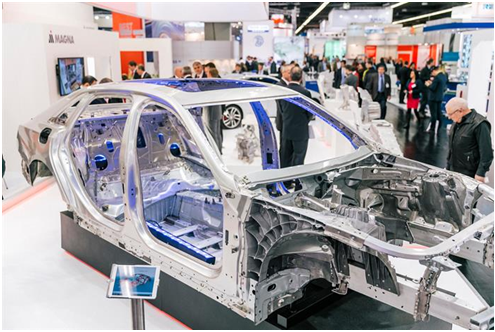Introduction:
High pressure die casting is a manufacturing process that has gained significant popularity in various industries due to its ability to produce complex and precise products with exceptional strength. This article aims to delve into the world of high pressure die casting products, exploring their applications, advantages, and the process involved in their production.
1. Understanding High Pressure Die Casting:
High pressure die casting is a casting method that involves injecting molten metal into a steel mold cavity under high pressure. The molten metal solidifies rapidly, taking the shape of the mold cavity, resulting in the production of intricate and detailed products. This process is widely used for manufacturing components in industries such as automotive, aerospace, electronics, and more.
2. Applications of High Pressure Die Casting Products:
a) Automotive Industry:
High pressure die casting plays a crucial role in the automotive industry, as it enables the production of lightweight yet durable components. These components include engine blocks, transmission cases, cylinder heads, and various structural parts, ensuring enhanced fuel efficiency and overall performance of vehicles.
b) Aerospace Industry:
In the aerospace sector, high pressure die casting is utilized to manufacture components that require high strength and precision. These components include turbine blades, compressor parts, and structural components of aircraft, contributing to the overall reliability and safety of aerospace systems.
c) Electronics Industry:
The electronics industry extensively utilizes high pressure die casting for producing heat sinks, connectors, and casings for electronic devices. The superior thermal conductivity and electromagnetic shielding properties of these castings ensure efficient heat dissipation and protection of sensitive electronic components.
3. Advantages of High Pressure Die Casting Products:
a) Exceptional Strength:
High pressure die casting products exhibit exceptional strength and durability, making them suitable for applications that require high load-bearing capacity. The controlled cooling process during solidification results in a fine-grained microstructure, enhancing the mechanical properties of the castings.
b) Complex Geometry:
The high pressure die casting process allows for the production of components with complex geometries and intricate details. This capability enables the manufacturing of lightweight yet structurally efficient designs, reducing material usage while maintaining optimal functionality.
c) Cost-Effectiveness:
High pressure die casting offers cost-effectiveness due to its high production rate and minimal post-processing requirements. The process eliminates the need for secondary operations, such as welding or machining, reducing overall manufacturing costs.
4. The Process of High Pressure Die Casting:
a) Mold Preparation:
The first step involves the preparation of the steel mold, which includes cleaning, lubrication, and assembly. The mold is designed to accommodate the desired component\’s geometry and features.

b) Injection:
The molten metal, usually an alloy of aluminum, zinc, or magnesium, is injected into the mold cavity under high pressure. The pressure ensures that the molten metal fills the entire mold cavity, resulting in a precise and detailed casting.
c) Solidification and Ejection:
The molten metal rapidly solidifies within the mold cavity, retaining the shape and features of the mold. Once solidified, the casting is ejected from the mold, ready for further processing or usage.
Conclusion:
High pressure die casting products offer exceptional strength, complex geometries, and cost-effectiveness, making them indispensable in various industries. The ability to produce intricate components with high precision and durability has revolutionized manufacturing processes and contributed to the advancement of automotive, aerospace, and electronics industries. As technology continues to evolve, high pressure die casting is expected to play an even more significant role in shaping the future of manufacturing.
-

- Prodotti di fonderia personalizzati parti pressofuse di alta precisione per telaio integrato e-bike
-

- Coperchio dell'alloggiamento del laptop con parti in magnesio pressofuso D
-

- Bicicletta per bambini in lega di alluminio di magnesio 3-8 anni Vendita calda a buon mercato Bicicletta per bambini da 14 pollici PER SEMPRE Commercio all'ingrosso 2022
-

- Telaio per mountain bike Magensium
-

- Parti pressofuse in lega di magnesio ad alta precisione per blocchetti di accensione per autoveicoli
-

- Componenti di alta precisione in magnesio thixomolding Copertura UAV

 0086-750-5616188
0086-750-5616188 +86 13392089688
+86 13392089688 sales@zhongmei-tech.com
sales@zhongmei-tech.com







